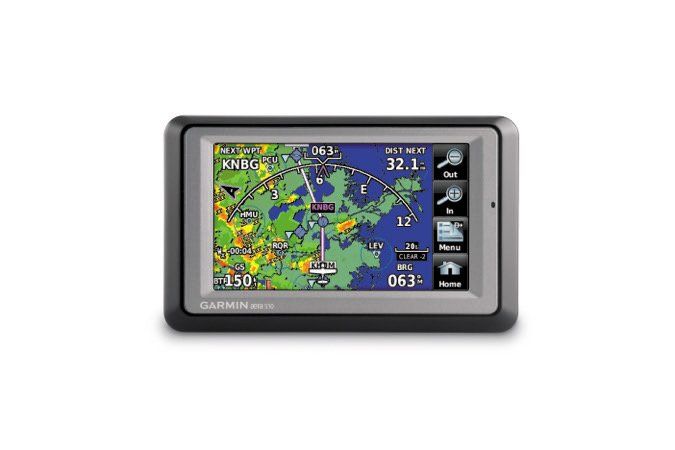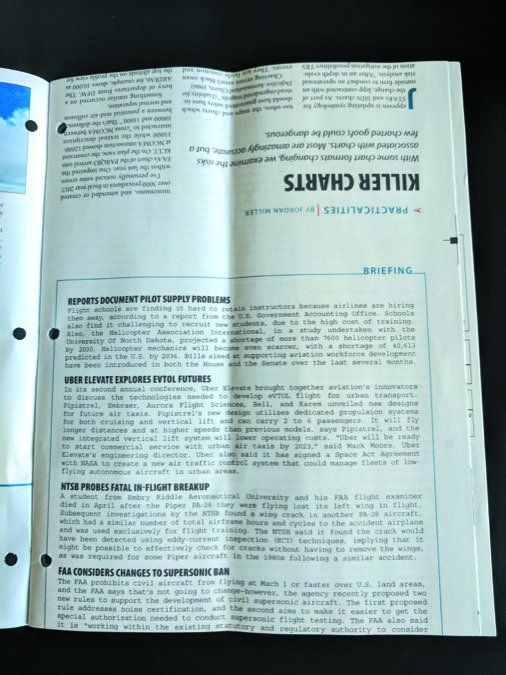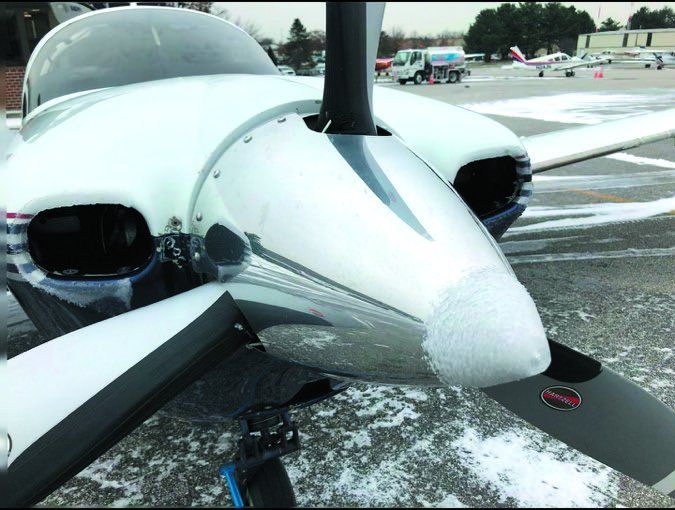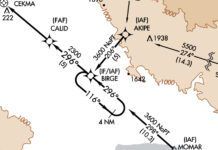Don’t Mess with Ice
I enjoyed the “Me Too” letter by Harry Dill in the July issue.
I think we tend to forget that “moderate” ice is not like “moderate” turbulence. It is right below “severe.” Also, we all talk about how unpredictable ice is, so having forecast or PIREPed moderate ice turn into severe is common. Oh, and really bad.
Harry gave good consideration to clouds and icing, and he made it out okay. However, I would not mess with moderate ice at all. Stick with trace and light, and maybe the worst you’ll see is moderate.
Harry can stop at our place in Maryland for a crab cake and wait for better weather on his way up coast from North Carolina.
Vince Massimini
Kentmorr Airpark, MD
Thanks, Vince. Maybe we’ll join you and Harry for those crab cakes. Mmmmm!
XM vs. SiriusXM vs. FIS-B

Your June Remarks, “Siriusly Messed Up,” resonated with me. I use a Garmin Aera 510 portable to get XM weather and it’s totally changed my confidence on long, cross-country flights in summer between the upper Mid-West and the Deep South where pop up thunderstorms happen daily and if you went by the forecasts you’d never fly. Gone are calls to Flight Watch every hour.
When Garmin offered the $600 option to get SiriusXM weather on my portable, I decided it wasn’t worth it, so I’m still with XM also. NEXRAD is the most important weather product I get from XM. Note that NEXRAD over the older XM updates every three minutes; SiriusXM updates every five. And, yes, I can get most everything else I need from ADS-B without subscription costs.
Either way, though, I prefer this NEXRAD over FIS-B because the satellite provides a much higher-resolution product and I can get it on the ground.
While you still have XM weather, you might consider downgrading to the Aviator LT package that you called “insufficient.” Or, you might consider just a used portable FIS-B receiver.
The legacy GDL 69 issue is a challenge. It’s a real problem that avionics technology is changing quickly but certified avionics are priced like we are going to use them for 20 years.
Justin Graff
Tupelo, MS
Thanks for the input, Justin. First, you seem to think that I prefer satellite weather. I don’t. I want durable, lower-cost weather, regardless of source. Also, NEXRAD isn’t as critical to me since I have on-board weather radar. Thus, even the slower update, lower-resolution FIS-B NEXRAD is sufficient for the long-range avoidance planning I need.Also, I’m familiar with many of the portable solutions and, call me a snob, but I prefer to keep supplementary information supplementary. For meaningful in-flight weather decision making, I prefer panel-mounted sources. Always have.It’s likely that I’ll end up swapping my Garmin GTX 330ES transponder for a GTX 345 to get the FIS-B, but I haven’t made the jump yet. —FB

Also Always Files
I read your July editorial, “I Always File IFR” with interest. I live in the balmy Southwest where, as one of my old buddies observed, it’s either severe clear, scary thunderstorms, or icy. So what good is IFR?
The late, great Dick Collins once observed that waiting to file IFR when it is IMC leaves one coping with the unfamiliar system as well as the demands of the weather. It’s smartest to always file and eliminate as many challenges as possible.
When I’m flying in weather it’s not hard to identify the pilots who only file when forced to. The strain in their voices tells the tale many times. I spent a small fortune tricking out my Bonanza with all the latest whiz bangs and my utility with all that only improves with practice. I fly quite a bit on business over familiar routes and filing takes care of all the problems you listed.
I want to acknowledge the group lead by Dick Collins at Flying that raised me. I fly in a small town without a lot of adult aviation companionship. They were it in the early days and I will be forever grateful to Dick and the group of writers he put together.
Alvin Jones Krow
(Location withheld)
That’s Difficult to Read
My issue of IFR for July 2018 is badly printed with truncated, upside down pages. May I get a replacement or a pdf?
Mark Tuttle
Arlington MA
Sorry for your troubles. By now, our customer service should have reached out to you to send a replacement hard copy.It seems that our printer forgot to preflight the presses before running that month and a lot of problems crept up. Spankings have been administered.If anybody else is affected, please contact[email protected]. and the folks there will send you a new copy.Meanwhile, note that as a subscriber, you can view or download the magazine from our website,ifr-magazine.com.
Harry Dill Photo
Don’t Need No Stinkin’ Vis
Thanks for helping us continue to learn with these quizzes. I look forward to the informative quiz each month and, well, the Killer Quizzes are real mind benders.
But the answer to question #4 in the July Killer Quiz about continuing to land with reduced visibility puzzles me. My understanding is that the visibility limits don’t affect Part 91 operations, and whether you can continue to land depends on seeing the appropriate landing lights and the runway environment as you descend (flight visibility, not measured visibility).
Andrew Doorey
Wilmington, DE
I think you have a common misunderstanding, Andrew.Part 91 operations can fly any (authorized & equipped) approach, regardless of the weather. (Part 121, for example, has to have mins to even begin the approach.) However, the stated visibility does apply to all operations.It’s a common belief that if you can see any of the listed items from 91.175, and given normal maneuvers, etc., that you can land. Since there’s no fed looking out the cockpit window with you, that’s often seen as a (wink, wink, nod, nod) practical reality. Plus, in fact, seeing one of those items from 91.175 often tells you that you do have the visibility, but that’s not a sure thing.So, to be fully legal, yes, you must also have the required flight visibility per 91.175(c)(2). Since there’s no way to reasonably measure flight visibility from the ground, determining flight visibility is pretty much left up to the pilot. But, if the conditions are marginal or worse for this approach, and there happens to be an FAA inspector hanging around the airport as you taxi in, be prepared to explain how you were able to determine that you did, indeed, have the required flight visibility. Merely stating, “I saw the runway from mins,” won’t cut it unless you can tie a distance to it: “I saw the runway from half a mile out.”The approach lights help, and that’s what this quiz focuses on. If you know your approach lighting system, you can determine your flight visibility from the numbers and types of lights you can see.Finally, you might be confusing “don’t need visibility minimums” with “don’t need the ceiling.” You don’t need the ceiling listed on the approach so long as you have the required 1) flight visibility, and 2) meet the rest of 91.175 with something in sight, normal maneuvers, etc. Think of the ceiling as a guideline: if the ceiling is 400 feet and the approach mins are 800 feet, you likely don’t stand a chance of getting in and might just choose to go elsewhere without even trying. But, if the ceiling is 400 and the mins are 420, it might be worth a try.We read ’em all and try to answer most e-mail, but it can take a month or more. Please be sure to include your full name and location. Contact us at[email protected].




